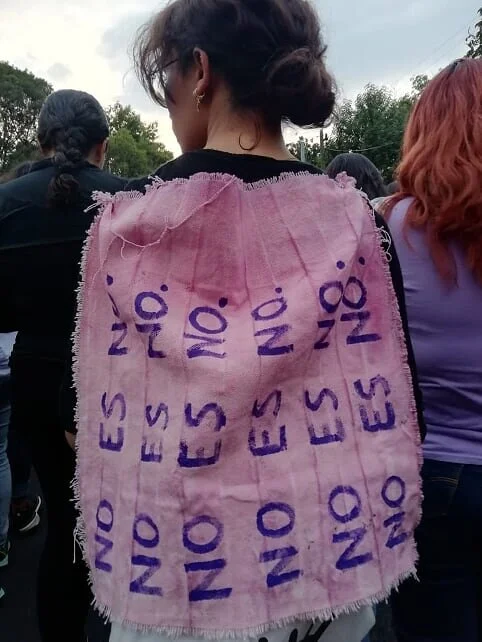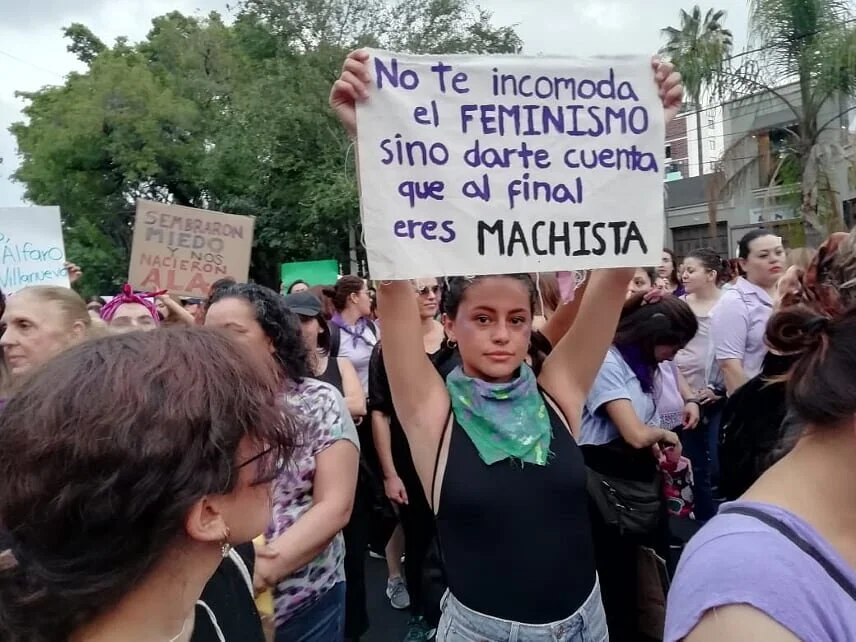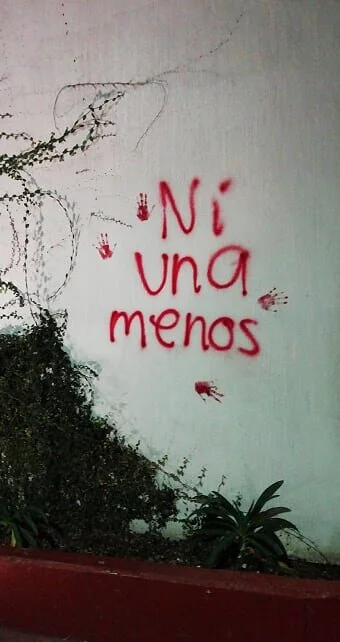By Jane Churchill
CW: Gender-based violence, femicide, domestic abuse, sexual abuse, tear-gas.
Gender-based violence in Mexico is not just a social problem - it’s a full-blown epidemic.
According to Mexican Government figures (which keep in mind, are heavily underreported), the number of femicide-related incidents have increased by 137 percent over the past five years. In the first month of 2020, 320 women were murdered, with 73 of these officially recorded as femicides. Inaction by authorities and the government left women with no other choice but to take to the streets.
Images from the protest. Image: Ligia Ponce.
Ligia Ponce, a local resident of Mexico's second largest city, Guadalajara, told me about her experience at the protest that occurred on 8 March, 2020. For some context, on 8 March 2020, a mass protest was organised in response to the growing number of femicide-related incidents across the country. Femicide, as defined by the World Health Organisation (WHO), is “generally understood to involve intentional murder of women because they are women, but broader definitions include any killings of women or girls”. Furthermore, the WHO explains that, “femicide is usually perpetrated by men, but sometimes female family members may be involved.
Femicide differs from male homicide in specific ways. For example, most cases of femicide are committed by partners or ex-partners, and involve ongoing abuse in the home, threats or intimidation, sexual violence or situations where women have less power or fewer resources than their partner”.
Whilst this was Ligia’s first ever femicide protest, she explained that these sorts of events do happen regularly, but normally with no more than 200 activists. This time, there were upwards of 35,000 protesters in Guadalajara. “There was even a marching band”, she said. Six hours south in Mexico City, crowd estimates were closer to 80,000. It was truly an iconic moment for women's rights in Mexico.
A few weeks before the protest, when Ligia and I were discussing domestic violence in Australia after the murder of Hannah Clarke and her three children, she was telling me how bad the femicide problem was becoming in Mexico, too. Little did I know how bad it had become until we discussed several incidents that had occurred in Mexico earlier that month. I will leave out the details in this piece, but I encourage you to read this article on one particular incident that really broke my heart.
Image: Ligia Ponce
“When I arrived, there was such a beautiful energy, I don’t think I’ve ever seen so many girls united.”
Ligia said there were a lot of mothers, marching with their kids. As well as a significant number of older women. And of course, on the frontline, were families of victims.
“Everyone was wearing black, purple, green or white” Ligia says. “And on the outskirts of the group, groups of women were wearing masks to scare away the media, and people who might want to hurt us.”
“Actually, there were a lot of men standing on the sidelines, staring at us. Not necessarily in a mean way, but of course some were. Some were crying, some were recording, and some were chanting with us. But at the end of the day, WE were the centre of attention and WE were making a change. We were boss.”
‘Not one [woman] less’ - an Argentinian grassroots feminist movement that campaigns against gender-based violence. Image: Ligia Ponce
As the protesters marched along, Ligia explains that the names of femicide victims were being painted along the roads and walls. The protest might have ended, but the names remain as a reminder that the fight has not ended. In saying this though, Ligia explains that the ‘graffitiing’ was “a little controversial in the crowd as many wanted to keep it as peaceful as possible to avoid any police confrontation.”
“About an hour into the protest though, there was a 30-minute period where the music stopped and everyone frantically began running in different directions. No one knew what was going on. I lost my friends but managed to find one of the women who was standing with us earlier. Then we eventually found out that some men had dispersed several canisters of tear gas bombs into the crowd. It was very scary.”
The march eventually continued though, this time with an even greater energy than earlier. “We were all just so fed up by this point, and the tear gas just ignited us further.”
When the crowd eventually made it to the monument, where the march ended, many victims were reading their stories to the crowd.
“Whenever they mentioned a name, the entire crowd screamed in union, ‘Justica para ___.” (eng. translate: Justice for __”).
The following day, on March 9, Ligia explains that, “the entire city was empty”. The second part of the protest involved a 24-hour strike where women across the country chose not to show up to work, university, school and other social activities. It was to prove a point that society simply cannot function without women. This article continues the story of the impact of March 9.
It is Ligia’s hope that by sharing her story with OWP, more people can understand how bad the situation has become in Mexico. She wants the events of March 8-9 to become a global story.
“We must fight today so we don’t die tomorrow.”
An image of solidarity and strength. Image: Ligia Ponce
References
La Vanguardia (2020), ‘Los feminicidios en México se disparan un 137% en los últimos cinco años’, available at: <https://www.lavanguardia.com/vida/20200127/473171115424/mexico-aumentan-feminicidios-976-asesinadas.html>
World Health Organisation (2012), ‘Understanding and addressing violence against women: Femicide’, available at: <https://apps.who.int/iris/bitstream/handle/10665/77421/WHO_RHR_12.38_eng.pdf;jsessionid=D8D17C88F4D9B19E0CF0DF3341D9D7F4?sequence=1>




